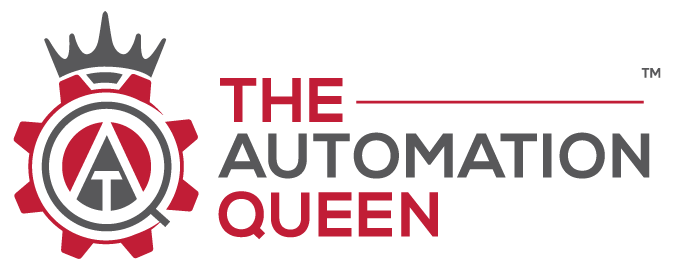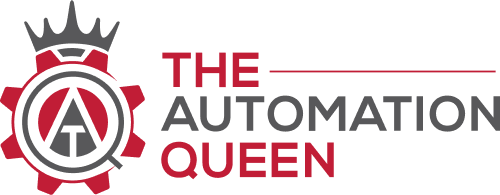Turning Crisis into Opportunity: My First Automation Journey Amidst COVID-19

From Personal to Professional
In my previous blog post, I discussed personal automation, sharing how it significantly transformed the way I approached and experienced my daily life. It was a journey that not only streamlined my routines but also left an indelible mark on the way I perceived efficiency, convenience, and the potential for harnessing technology and innovation to enhance our everyday experiences.My journey into personal automation had been fantastic! However, while I found great success in automating my personal routines and tasks, I couldn’t help but wonder: could I extend the incredible benefits of automation to my professional life as well? It was a question that had been lingering in the back of my mind, but I knew this endeavor would present its own set of challenges.
How Did We Get Here?
You see, within my organization, I had carved out quite a niche for myself. I had earned a reputation as someone who consistently delivered results, and my career had been on a steady upward trajectory in the field of Identity & Access Management (IAM). The turning point came when the Business Apps programmers, who were responsible for the development of our identity management solution, joined the IAM team. This was certainly a pivotal moment in my automation journey. The collaboration allowed us to enhance our IAM solution, ultimately improving both customer experiences and our security protocols.One of the most noteworthy additions we made through this collaboration was the introduction of group management capabilities. This seemingly simple feature had far-reaching implications, making the management of user groups a breeze and streamlining our operations in ways we hadn’t thought possible. Yet, I still hungered for more, seeking new opportunities to leverage the power of automation in my professional endeavors. The possibilities seemed limitless, and I was determined to explore them.
The Pandemic Challenge
It was a typical day at the office, or at least it should have been. But there was nothing typical about the air of anxiety that hung heavy in the atmosphere. COVID-19 was spreading like wildfire, and the fear that had gripped the world had made its way into our workplace as well. My counterparts were worried about coming to work and going home.As a fervent advocate for continuous learning, I remain attuned to emerging IAM technologies even in my current role at Texas Children’s Hospital, constantly refining my abilities to adapt and innovate. I believe that my insatiable curiosity for continuous learning, coupled with an inner drive to create a meaningful impact led me to a moment of irresistible urge to learn about automation and explore its diverse array of applications.

Although no official decision had been made to transition to remote work, it appeared increasingly inevitable. If we needed to send thousands of employees home, we would be overwhelmed. Even if our team worked around the clock, we wouldn’t have the capacity to manage such a massive workload. Out of panic, I immediately reached out to my new leader, and subsequently escalated the matter to our director, explaining the critical nature of the situation – “NO ONE will be able to work from home, it would be technically impossible.” I emphasized that enabling remote work for everyone seemed almost technically impossible given our current process and capacity constraints. The fate of our organization hung in the balance, and I was determined to find a way forward.
An Opportunity
Amidst the panic and problem identification, I quickly switched to problem-solving mode. I reached out to our “Engineers” (programmers) to see if there was any way we could leverage automation to tackle this unprecedented challenge. At first, they were hesitant, and understandably so – automation was beyond their usual scope of work. But for me, all I could see was an opportunity, a way to turn this crisis into a chance for innovation.I worked day and night, examining the array of tools at our disposal. I knew that we had “identity bots,” but we hadn’t fully harnessed their potential. They were a relatively new addition to our organization, and getting them up to speed would require a steep learning curve. Undeterred, I tirelessly researched and collaborated, ultimately pitching an idea to our engineers. They listened, and while they acknowledged that the solution sounded promising and doable, there was a significant roadblock in our path – getting approval to create the automation we so desperately needed.
Once I was certain that our plan was solid and had the potential to save us from catastrophe, I took it upon myself to present the case. I stood before our leaders and presented 3 options, each carrying its own implications:
Option 1 was a proactive approach: Our team could automate both remote access and remote access workstations and be prepared long before any official announcement regarding work from home came our way.
Option 2 was a more measured approach without diving headfirst: The appropriate team could work on solutions and develop a plan to ensure that all professions could seamlessly transition to remote work from home if an announcement is made.
And then there was Option 3, a path of procrastination: A decision to simply wait, and when an announcement is made, it would take us weeks to transition to remote work from home. Meetings were convened, and all teams gathered around the table with their respective proposals. To my disappointment, no one believed that automating these requests was feasible. The air was thick with phrases like “no,” “can’t be done,” and “impossible.” It was really disappointing to witness this collective doubt. We couldn’t even garner support from our vendors!
I Present My Case Your honor
Of course, by this time, I had interviewed all my collaborators ensuring that they possessed the necessary capabilities for the task at hand. It was now my turn to present our plan of action.

I assembled a diverse team of individuals from the database, Identity & Access Management, Business Apps, and SharePoint departments. I understood that this was not a task we could accomplish alone; it required a collaborative effort from multiple teams, with everyone fully committed and onboard. The team was excited! When I initially presented the idea, there was some hesitation, but I reminded them that we had some of the most exceptional talents in the organization, perhaps even globally, on our team. If we, as a united team, couldn’t make it happen, then it was likely no one else could. So, filled with determination, we fine-tuned our plan and then presented it to our leadership.
Here’s what we proposed:
Step 1: We could create a request form in SharePoint, utilizing SharePoint as the input for requests, and then have the request information sent to a SQL table (database). Our Business Apps representative confirmed to leadership that this was possible and offered a brief description of how the work would be carried out.
Step 2: We could utilize our identity management tool to process the requests and grant access to the appropriate groups. Additionally, we planned to write a script that would provide remote access to workstations based on availability. Engineer #1 confirmed that this was achievable and explained the process to leadership.
However, an important question emerged from our leadership: How would notifications be handled? Could we send updates to end-users?
I nearly overlooked this crucial step, but I promptly responded, “Yes, we will send out notifications immediately that the request was received, and will be processed once approved. Our Identity Management tool would take care of notifying users about the granted access and provide instructions for remote access. In cases of failure, we’d promptly notify them with instructions on how to proceed.” Engineer #2 confirmed the workflow and extended additional support for the notification system.
Our leadership team listened attentively to the plan. While it seemed ambitious, it also appeared to be possibly achievable. My anticipation was at an all-time high. Sure, there were concerns, but at this point, no other viable options were on the table. Would they grant us the green light for this endeavor? What did we have to lose? The idea was presented to our vice president, and to our exhilaration, we received approval. I had never felt such a rush of excitement; this feeling was even better than the fleeting thrill of buying a new car, only to later realize you’ve accumulated significant debt. It was pure excitement.
Our team sprang into action, with the database and SharePoint teams taking the lead in building their respective portions of the process first. Now, it was up to our engineers to start coding. I could only offer support, as coding can be incredibly challenging.
On a Wednesday afternoon, we worked late into the evening, developing and testing code snippets. We needed to have the code ready for a presentation by Friday. Thursday morning, we came in fresh and ready. I collaborated with Engineer #2 to create the notification verbiage and secure the necessary approvals so that this aspect would be seamlessly integrated once the coding was complete. Meanwhile, my coding wizard was hard at work. I prepared all the use cases I would test and set up our test environment. When the clock struck 4 o’clock, our engineer was ready to begin the crucial testing phase.
Testing the Waters
My motto for testing is “Test it to Break it!” I began the rigorous testing of solution, starting with remote access requests and then remote access workstation requests. So far, everything was going according to plan. I began testing using bogus information, simulating offline computers, and substituting user names where PC names were supposed to be. To my delight, all of these test cases PASSED, and our engineers became even more excited.

The final and crucial test was to check the current request system. I remember the engineers suggesting, “We don’t need to test that; we never touched that form.” However, my determination was too strong to be swayed. I replied, “I’m testing it; just sit back and wait.” So, I proceeded to test the form by requesting something entirely different for a new test user, and it PASSED. However, when I tested requesting different access for someone who had previously requested remote access, it FAILED.
Specifically, when we requested access for someone who already had remote access, the system inadvertently removed their existing remote access. This issue devastated my engineers. It was now 6 PM on Thursday, and the requests for remote access had surged to over 1000.
One Amazing Team
I reassured my engineers that we were almost there! Everything that we had accomplished was about to come to fruition, and we were on the brink of a new chapter that would significantly shape their careers.
With conviction in my voice, I assured them that we were almost there, and even though I couldn’t code, I was there to cheerlead for them. “You’ve got this – I KNOW you can do this! If no one else can, I’m absolutely confident YOU can! Let’s take a quick break and then let’s dive right back in!” I encouraged them with every ounce of energy I had left.


This idea wasn’t well-received initially. However, my argument was that if we received 500 surveys with 5 stars for automated processes and 100 with 3-4 stars, it would enable me to have more conversations about the benefits of automation that go beyond the hours of manual labor saved on thousands of requests. I felt justified in my push, but what do you think?
Team Impact: The Road to 60% Automation
The introduction of automation marked a pivotal moment in our journey, heralding a wave of transformation that rippled through our team and reshaped the way we approached our work.
The real intrigue, however, lies in how our team of analysts responded to this sweeping transformation, particularly our IAM analysts, who typically processed thousands of tickets. How did we address their genuine concerns about job stability and the future direction of our team? How would their roles evolve? Would they be rendered obsolete by the very technology designed to assist them? Where do we stand on our journey now?
As we continue our journey, we’ll explore how we addressed these concerns and achieved a 45% automation rate, with a goal of reaching 60% by 2024. These are the stories I’ll be sharing in the upcoming blog posts. So, stay tuned!

